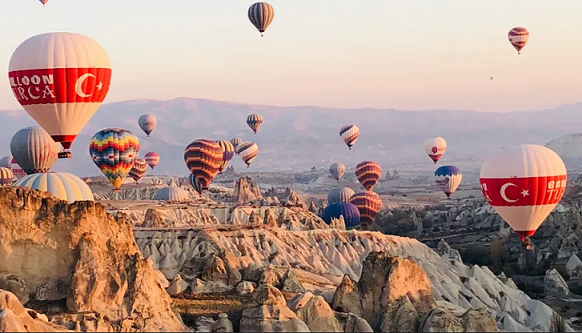
Cavusin
: The extent of the erosion in this village forced the inhabitants
to abandon their homes on the slopes and settle on the plain below.
However, this rock ghost town is still alive to visitors in the
interiors of St. John the Baptist Church (8th century) and the Cavusin
Church (10th century). Reached by an iron stairway, what is now
the entrance to the church was originally the narthex. Second only
to the Tokali Church in detail, the frescoes illustrate different
narratives from the New Testament in red and green, predominant
colors of the region. The
Soganli Valley: Enclosed by steep hills, this village unique beauty
is the contrast between its rocky climate with vegetation and streams.
Of particular interest among its many rock churches are the two
storied Kubbeli churches. The natural structure of the rock has
been worked to give the impression of a dome decorated in a geometrical
design.
The
Ihlara Valley: Formed from the volcanic eruptions of Hasan Dagi
carving gorges through the Melendiz range, this region between Ihlara
and Selime was once very populated. Today over a hundred monasteries
and churches dating from the 10th to the 13th century still peer
through their rock openings at the passersby. In a church dedicated
to St. George are both the names of the Seljuk Sultan and the Byzantine
Emperor (Giyasettin Mesud II and Andronicus II) that aptly illustrating
the religious tolerance of the Turkish rulers.
Underground Cities: In order to escape from Roman invasions
during the 7th century, the Christians of the region built complete
underground cities. Some of them extending as deep as 14 stories
and there the populations were able to live hidden for months.
They were so well hidden that the underground cities were undiscovered
until the 1960's. Among the most famous and well excavated
are Derinkuyu and Kaymakli. The entrance to Derinkuyu is very
close to the present day city, meant obviously to escape from
immediate danger and for shorter term stays. Kaymakli is also
worth to visit with its wine cellars, supply areas, chapels, stables
and tombs. |